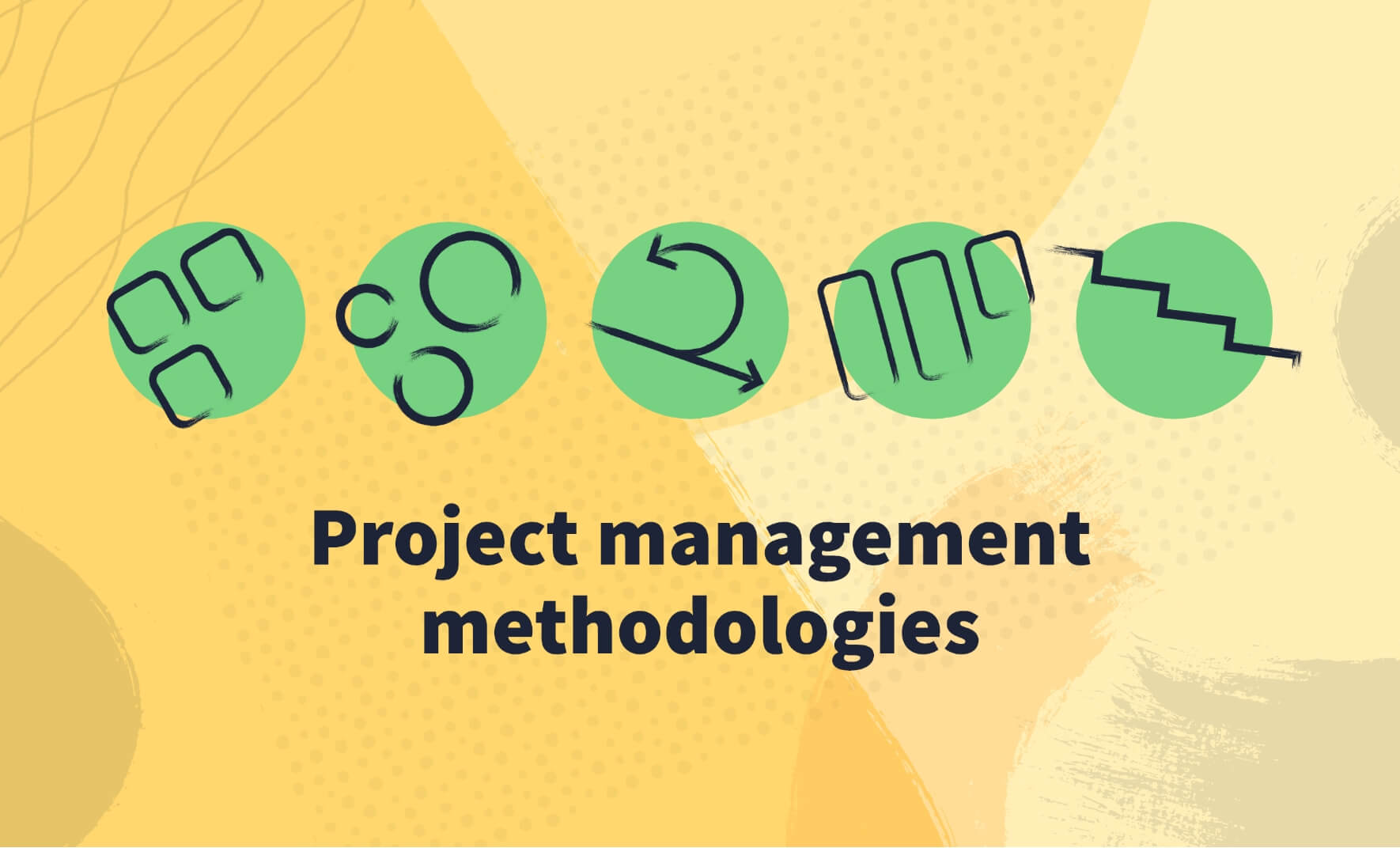The 5 project management methodologies every manager must know

There are whole books, courses, seminars and lectures on the subject of project management methodologies. This is not one of those. This is a brief article to explain in a very basic manner the 5 top project management methodologies that it is vitally important to get to grips with.
Put simply, you use methodologies. We all do, in every aspect of our day to day work and indeed life. The methodology is why we do things the way we do things. Behind this are the techniques, process and rules that we follow, often without even thinking.
On a practical level there are many ways to deliver projects and obviously different projects will have their own particular issues. Your project management strategy ought to change depending on the project, size, industry, timelines and framework set. The aim of this brief guide is to explain what the main methodologies are and therefore help you choose which one will work for your next project.
Waterfall

The idea behind the project management methodology Waterfall, sometimes referred to as SDLC (Software Development Life Cycle), is heavy up-front planning, with the aim of doing it once but doing it right. Put simply, the more you plan before you start then as long as the plan is executed in sequences to strict standards, the result will naturally follow -like the water running down a waterfall.
For Waterfall methodology to succeed it is therefore vital that the full detailed requirements of the project are established in the beginning, each stage when completed leads to the next, and the whole approach is sequential. Adaptation, tweaks, revisions and changes are not expected and the detailed initial planning leads to the timely delivery of a completely fulfilled project on budget.
It’s not the most fashionable methodology in modern times as planning takes a lot of time with little obvious end product. However, if you can get it to work it can be very efficient, predictable and reliable.
Pros
- Predictable – timelines, budget
- Easy to plan resources in advance
- Complete project delivery
Cons
- Lack of flexibility – revisions, changes
- Needs excellent, precise planning, which is time-consuming with seemingly little to show
- High risk – hope the client likes it
When to use it
Projects that have very specific, detailed requirements, and good initial communication between the project manager and client. Projects that are concrete.
Agile

Project management methodology Agile is almost the complete opposite of Waterfall -and often popular for that reason. It is a methodology based on a fluid and flexible agent/client relationship. It is very popular at the moment, especially with clients and projects that are liable to change their specifications during project development.
This flexibility is often welcomed, but comes at a cost. Changes and revisions all take time, sometimes much more time than you think. It is often necessary to go back several stages, to make sure everything fits and aligns well. The costs will go up, budgets will be stretched and of course, eventually decisions have to be made.
The flexible, collaborative approach is appealing but it does require ongoing communication, feedback, lots of toing and froing and for somebody to take decision making control.
Pros
- Flexible
- Low risk -clients are constantly consulted and updated.
- Collaborative
- Great for developing long term business relationships
Cons
- Can be costly -you pay for time and extras
- Difficult to plan – schedules, budgets, timelines, staff
- Needs lots of communication during the project flow -adds time
- Needs an executive decision maker
When to use it
General idea projects that are liable to change during development. Ideally with a two way, collaborative approach from client and project manager to come up with something truly special. Good for projects that require the latest technology, and a trusted team.
Lean

The idea of Lean is pretty much in the name. A no wastage project management methodology that is streamlined and efficient. Some would argue this is where Agile gets its basic – less is more concept. Without getting too bogged down in details, it’s all about eliminating waste and identifying and optimizing value.
Principally Lean is about removing variations, removing anything that doesn’t add value to the customer and removing overload (optimal capacity being 60-70%). Everything should be about delivering value and cutting out everything that doesn’t add value.
Pros
- Changes the mindset to a purely value approach
- Short deadlines
- Long term potential cost reduction,
Cons
- Can be costly to implement
- Need quick decisive decision making
When to use it
For transforming your whole organisational approach and are looking for an overriding set of principles.
Kanban

Kanban takes the lean, mean value based principles of Lean and adds a push for efficiency. It’s high on flexibility, self-management, teamwork and collaboration. Kanban wants you to focus on the things that really matter.
Kanban works on visualising work-flow processes (whiteboarding, online), it literally means “billboard” in Japanese, with the idea of improving speed, measuring lead times and quality, through clear policies, processes and ongoing evaluation. This means that Kanban works great when you need continuous, steady output and progress towards the goal but still keep flexibility and be able to cope with changes.
Pros
- Flexible
- Highly visual and focused
- Can be applied to all fields of project management
Cons
- Not suitable for incredibly complex, multi stage projects.
- Not great for changes in customer demand
When to use it
Superb for great for operational or maintenance environments where priorities can change frequently. Small tight teams used a flexible approach.
Scrum

Scrum is an agile framework for developing, delivering, and sustaining complex products, particularly in software development. The scrum methodology is based on a lot of autonomy from the development team rather than exact client details and requests. With the hope that the professionals are in a better position to know what will work and what won’t. Scrum is based on desired outcomes rather than criteria and definition.
This is the ultimate teamwork methodology, with no overall leader (there is a team coach to aid organization and strict roles) but team decision making, and self-organization. This is typically an initial team meeting and allocation of resources 9time, functions etc) and daily routine meetings to synchronize team members’ work, progress, identify issues and set the day’s workflow. Each day is then a series of sprints, to the next stage.
Pros
- Allows for professional autonomy
- Structured
- Fast paced development
Cons
- Can be restrictive in terms of timed sprints
- Be careful of scope creep running out of control
- High risk – potential lack of leadership and responsibility
When to use it
Clear vision, complex projects with accomplished, well motivated, experienced teams, often small in number.
There is a methodology combining the structure of Scrum with the progress workflow flexibility of Kanban, imaginatively named Scrumban (wouldn’t Kanrum have been better?). Planning is done when needed rather than a through prescribed daily meeting but there is a firmer structure than pure Kanban.
Final words
The selection of a typical project management methodology isn’t easy, as the variable often depends on things that are out of your control. It is important to remember that the methodology is a tool, and as such you use the best tool for the job in hand. Of course you have your favourites, but you wouldn’t use your favourite hammer to saw wood.
Questions need to be asked before commencing and establishing a methodology such as budget, collaboration potential, timeline, complexity, resources, flexibility, risk and team size. All will be important in the decision making process. Our guide although brief offers up some of the basic principles and project management methodologies to help you plan but let’s note from the off that there are other methodologies and hybrid combinations to explore.